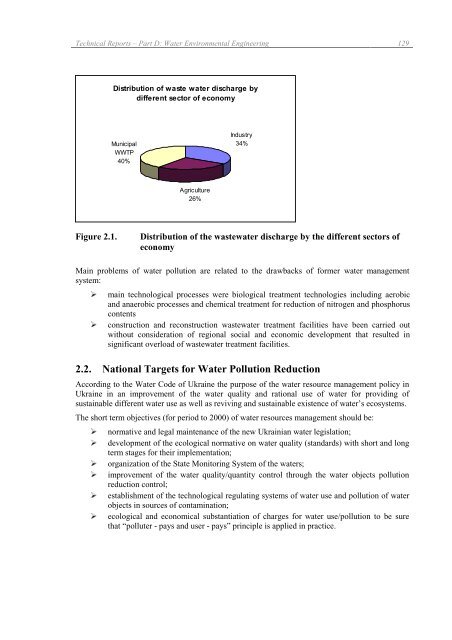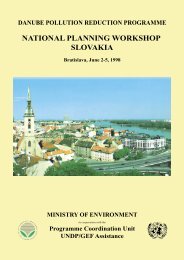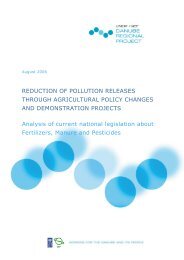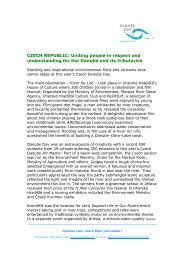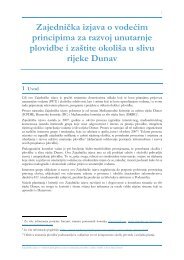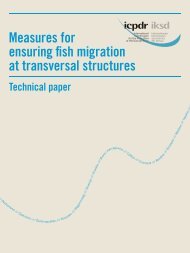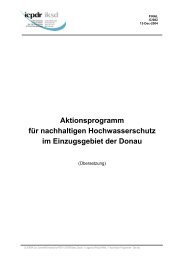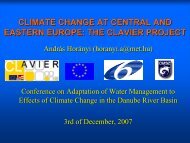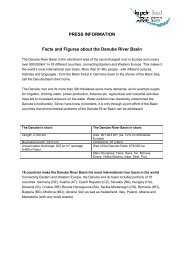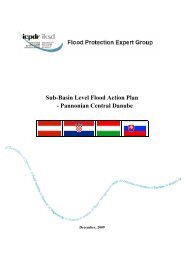Technical Reports Parts C,D - ICPDR
Technical Reports Parts C,D - ICPDR
Technical Reports Parts C,D - ICPDR
Create successful ePaper yourself
Turn your PDF publications into a flip-book with our unique Google optimized e-Paper software.
<strong>Technical</strong> <strong>Reports</strong> – Part D: Water Environmental Engineering 129<br />
Distribution of waste water discharge by<br />
different sector of economy<br />
Municipal<br />
WWTP<br />
40%<br />
Industry<br />
34%<br />
Agriculture<br />
26%<br />
Figure 2.1.<br />
Distribution of the wastewater discharge by the different sectors of<br />
economy<br />
Main problems of water pollution are related to the drawbacks of former water management<br />
system:<br />
<br />
<br />
main technological processes were biological treatment technologies including aerobic<br />
and anaerobic processes and chemical treatment for reduction of nitrogen and phosphorus<br />
contents<br />
construction and reconstruction wastewater treatment facilities have been carried out<br />
without consideration of regional social and economic development that resulted in<br />
significant overload of wastewater treatment facilities.<br />
2.2. National Targets for Water Pollution Reduction<br />
According to the Water Code of Ukraine the purpose of the water resource management policy in<br />
Ukraine in an improvement of the water quality and rational use of water for providing of<br />
sustainable different water use as well as reviving and sustainable existence of water’s ecosystems.<br />
The short term objectives (for period to 2000) of water resources management should be:<br />
<br />
<br />
<br />
<br />
<br />
<br />
normative and legal maintenance of the new Ukrainian water legislation;<br />
development of the ecological normative on water quality (standards) with short and long<br />
term stages for their implementation;<br />
organization of the State Monitoring System of the waters;<br />
improvement of the water quality/quantity control through the water objects pollution<br />
reduction control;<br />
establishment of the technological regulating systems of water use and pollution of water<br />
objects in sources of contamination;<br />
ecological and economical substantiation of charges for water use/pollution to be sure<br />
that “polluter - pays and user - pays” principle is applied in practice.


